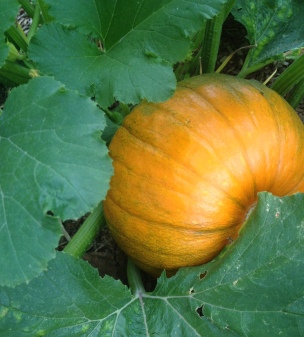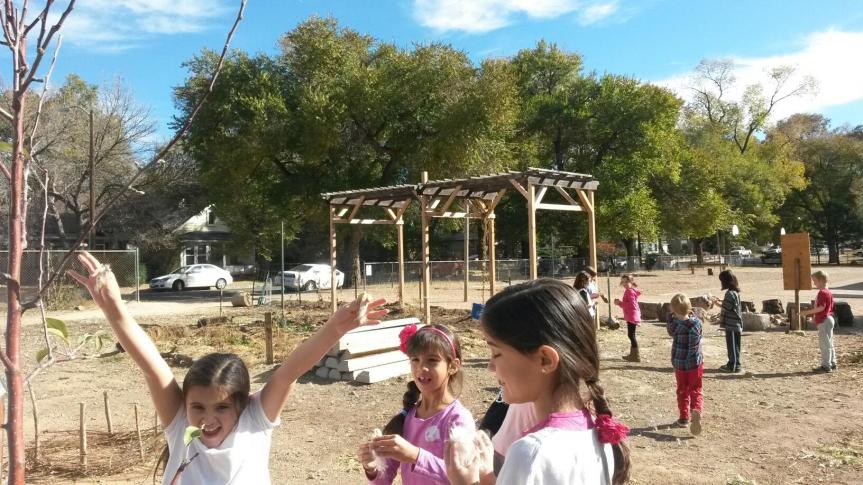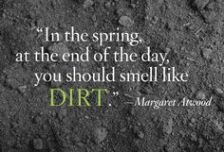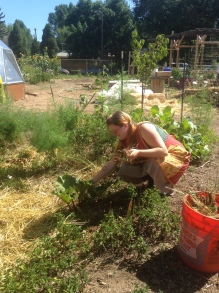
This year, the staff decided not to include a narrative from specials teachers into our formal report cards, so we’ve decided to post ours here so you can see what your children have been up to in Agricultural Arts.
~Cheers, the Farm to Fork Team
Fall Semester 2015
1st Grade: (Mrs. Ellington) Our focus has been on exploring the farm by getting to know the plants and animals who call it home, thus creating a reverence and sense of place. First graders have been introduced to the farm through various seasonally appropriate stories this semester. One of their favorites included The Turnip, where after the story, they acted out the story by pulling out our turnips all together and tasting the greens. Children have come to love the animals and appreciate assisting with caring for them. There have been many opportunities for children to work on their communication and cooperation skills as well. Some of our favorite activities this semester included planting a variety of bulbs that will emerge in the spring after listening to the story of the Root Children; along with hunting and digging for worms (even in our pj’s), building fairy homes from found natural objects, collecting eggs, making bird seed treats for our feathered friends. Students also observed and noted the many changes occurring in the garden over the course of the changing seasons. As spring emerges, we will continue to focus on seasonal changes and rhythms, farm chores, cold season plant propagation and care, exploring beneficial insects and creating garden art.
2nd Grade: (Ms. McCabe, Ms. Carson) Second graders begin their Agricultural Arts class with a verse and story related to the seasonal life of the garden and farm. There is an emphasis on learning the proper tools to use and store, animal care, and shared chores. We are learning to identify edible plants to pick for Cooking Arts class. Tied to story, we planted narcissus bulbs in compost beds and created faery homes with found natural objects. We made a vermiculture worm house which sprouted pumpkin seeds! They enthusiastically take turns searching for laid eggs to wash and take to Cooking Arts class. Second graders filled the air with milkweed seeds to spread the Monarch Butterfly habitat in our neighborhood. As our growing season approaches they will experientially absorb the connection to their food from compost to seed to harvest.

3rd Grade: (Ms. Lang/Corey, Ms. Gordillo)Third grade has been focusing on the many uses of plants in human culture and the role of the farmer. This semester, third graders have also been busy with practical farm work, participating in the many chores and coming to understand the hard work that it takes to care for animals and plants over the course of a fall and into winter. Students explored the process of preparing raw wool for dyeing. They participated in washing, rinsing, drying, carding, and dyeing the wool. They then took their finished wool to their classrooms to be used in handwork projects. Some students harvested peppermint, tansy, and sage from the garden that were used in one of the dye baths. The colors and smells of the varying dyes inspired a variety of surprising and animated responses. Students also enjoyed the opportunity to build fairy homes using found materials to coincide with their shelter block. We went searching for compost critters, comparing our findings and discussed their role in decomposition. Because third graders enjoy an extra period of ag arts each week, there was plenty of extra time for soil studies, collecting seed to use in the spring while exploring the importance of seed saving, harvesting pumpkins for the nature tables, filling raised beds and planting winter wheat and rye cover crops while learning a planting verse, stringing marigold garlands for Dia De Los Muertos, making chicken treats for Winter Faire and most recently assisting with building the dome beds, recognizing and following the pattern needed to lay stone for a strong wall. As winter wanes, students will be painting our new chicken coop, as well as exploring the role of pollinators in the garden, preparing the soil for planting, seed propagation and care, and discovering the process and project of building a cob oven.(our intent is to engage all grades and the larger community in this unique opportunity as well).
4th Grade: (Ms. Cedeño) The fourth grade focus is on local geography, native plants and animals. They explored garlic and the many uses associated with it, as well as learning about garlic folklore across cultures. They then had a lesson on planting garlic and and using their measuring skills, amended and planted a 4×10 ft. bed to be used in Cooking Arts next year. We then shifted our focus on native plants that produce green dye; smelling, touching, drawing and labeling the plants that the third graders had harvested. Students also participated in macerating the plants and preparing one of the dye baths to dye cotton muslin with a mordant to be used in their handwork. After dyeing, each group’s cotton came out slightly different, so it was interesting to infer why that happened. There was much teamwork involved in harvesting the last of the fall crops for cooking arts and clearing the beds for winter. Students discussed cold season crops and planted a bed full of winter greens in the dome(which have become Snowball treats) and sawed wooden signs to label the plants. They also learned about the monarch life cycle while spreading milkweed, and exploring the concept of the Native American three sisters garden while creating 3 sisters seed packets to take home. We will soon begin studying seed propagation and care , identifying the cardinal directions and discussing the role of the sun in growing crops and focusing on incorporating native plants into the garden.
4th Grade: (Ms. MacClaughry) Fourth Graders have focused upon native plants and geographic features while attending to garden and farm chores and animal care. We emphasize observation and have used the sun to determine the cardinal directions. They planted bulbs and created a vermiculture worm house. We collected and made ‘take home’ seed packets with Giant Grey Stripe sunflower heads, explored their origin and use by people worldwide. We measured their circumference, examined the ‘Golden Ratio’ pattern of the seedheads and estimated the number of seeds based on row numbers and multiplication. Fourth graders dyed muslin for their handwork bags with specific herbs and alum mordant. After Winterfaire, we made wreaths to take home discussing their cultural significance in Europe. We will soon begin cold season plantings, seed propagation and care, and a ‘native plant’ garden.
5th Grade: (Ms. Palmblad) Fifth graders this semester have focused upon seasonal ‘metamorphosis’ of plants within the larger organism of the garden and farm. Delphinium plants and seeds were packaged with depictions from the Greek myth and saved for the planned ‘pollinator’ garden. Native Michaelmas daisies were picked and pressed. We strewed milkweed pods after a study of the Monarch Butterfly cycle and the threat to their life cycle via habitat destruction and GMO’s. Fifth graders collected and macerated herbs specific to make dye for the fourth grade handwork cotton and wool projects. Snow gave some of them the opportunity to saw blocks for an igloo foundation. Students made wreaths from discarded Winter faire evergreen bows and we examined their tradition in European/Celtic culture. There is a focus on weekly cooperation, stewardship of the garden/school grounds, and a developed work ethic for shared chores and animal care: most recently, priming the bare wood on the new chicken coop and brick wall building in the dome.
6th Grade: (Mr. May) Six Graders this semester have been exploring the farm and it’s role of a “living organism”. We began the semester with learning about how to care for the animals and students do so enthusiastically each week. We then transitioned to focusing on compost, searching for the decomposers and discussing and comparing each group’s outcomes. We also learned about the materials needed to create an ideal “compost cake” and how to “layer”our piles properly for the most benefit, and discussed the greater benefits compost offers to plants and the environment as a whole. Students took down the sunflower patch, using the stalks and leaves to create new piles. We then moved into exploring soil by taking different samples from around the schoolyard and comparing the contents of the differing layers, as well as discussing what soil is composed of on the farm and in nature. Students drew the phases of the moon and we discussed appropriate garden tasks associated with those phases. Students also learned about the healing properties of calendula and made calendula salve for Winter Faire. They enjoyed making wreathes from leftover boughs from Winter faire, adorning the garden and taking them to many of the classrooms. Sixth graders also focus on recognizing the “human” in each other each week by taking time to recognize their peer’s efforts in the areas of teamwork, cooperation, problem solving and kindness. Spring semester will include painting our new chicken coop and exploring the seed and it’s unique qualities and structure, cold and warm season plant propagation, companion planting, exploring pollinators, and general garden care.
7th grade: (Mr. MacDonald) 7th graders have taken a leadership role on many levels this semester by participating in every aspect of “farm life”. They have completed many building projects, sharpening their math and critical thinking skills while using a variety of tools and supplies to do so. Over the course of the semester some of their projects included creating 2 new beds near the rabbits using rocks and a handmade mud slip, repairing the chicken coop and run, making a compost sifter, putting together our hose cart, sawing chalk boards for the kindergarten area, and repairing fencing and signage. They have also begun exploring the principles of garden design while creating designs for the “sensory spiral” portion of the schoolyard. They then came together to discuss ideas, collaborate and compromise, and vote, thus creating a final plan. This will continue to be a main focus for spring, in addition to propagating seed for those plants to be used. In addition, students explored the subjects of soil composition, compost, and seed saving, as well as caring for farm animals each week. This semester, we will continue to build structures for the garden, finish painting the new chicken coop, while also exploring seed propagation and care, proper tool cleaning, and putting together all the elements of the sensory spiral.
















































































































































